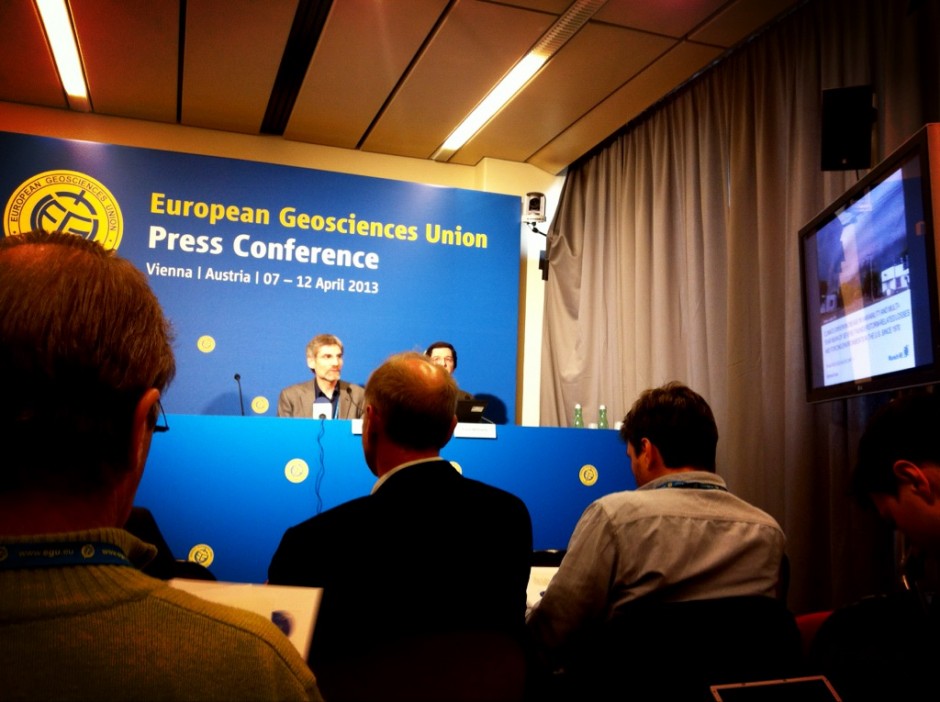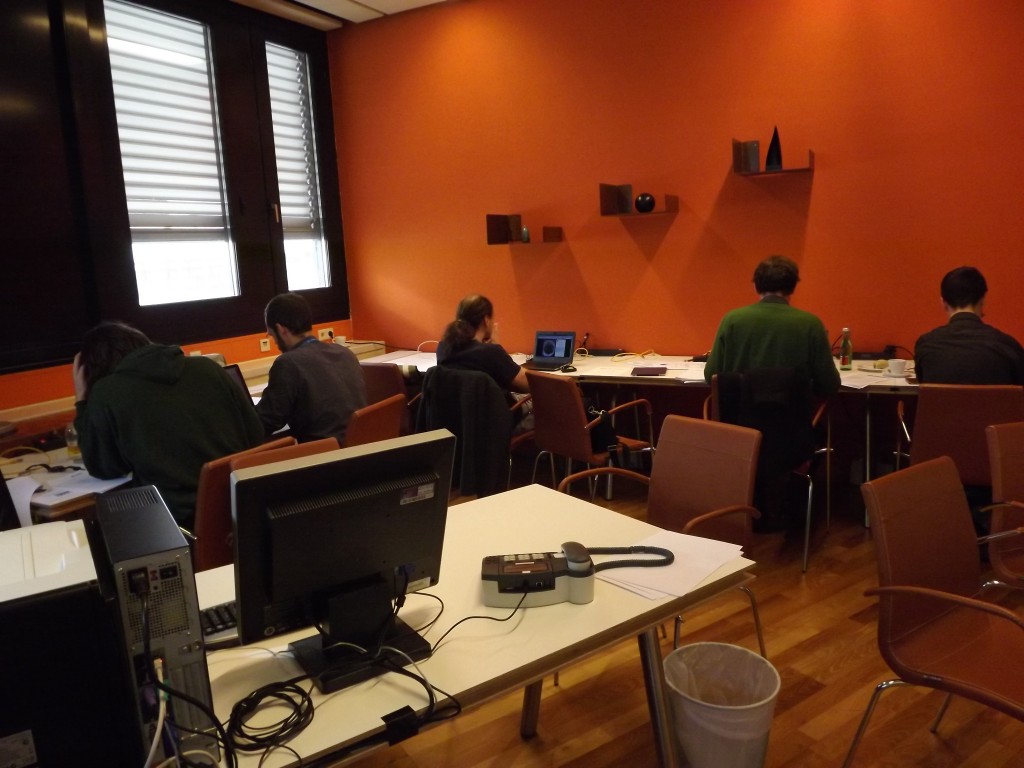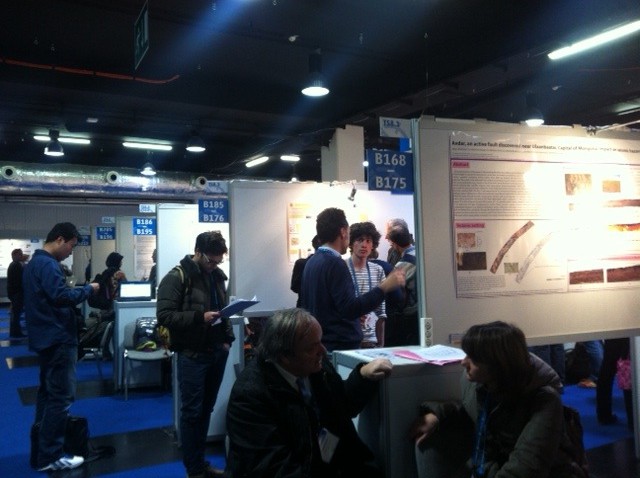 The GfGD team have landed in Vienna for the European Geosciences Union General Assembly 2013! You can find Joel (GfGD Director), Rosalie (GfGD Blog Manager) and Faith (GfGD University Groups Officer) in sessions on hazards, water and climate (see our schedule highlights for the general plan!). We will be tweeting and blogging about the latest research from the press centre.
The GfGD team have landed in Vienna for the European Geosciences Union General Assembly 2013! You can find Joel (GfGD Director), Rosalie (GfGD Blog Manager) and Faith (GfGD University Groups Officer) in sessions on hazards, water and climate (see our schedule highlights for the general plan!). We will be tweeting and blogging about the latest research from the press centre.
Dangerous Phenomena
I spent the morning in session 9.12, which included talks from a range of people involved in modelling dangerous phenomena; from lightning strikes on equipment that cannot afford to undergo failure, such as facilities at the Atomic Weapons Establishment, to the effect a nuclear war would have on agriculture.
Stuart Fraser, a geographer now based in the department of Civil Engineering at UCL, has been working with the GNS tsunami team to optimise evacuation planning for local tsunami hazards in New Zealand. His talk was a great example of integration of social and geophysical data, and we chatted to him more after the session.
The south coast of New Zealand is seismically active, and some earthquakes are capable of generating tsunamis. However, the repeat time of major tsunamis is unclear. There is some palaeo-seismic evidence suggesting they could be as infrequent as every 600 years, but other evidence suggests a repeat time of 70 years, with the last event being in 1947.
“With such a short recorded history, we don’t really have a handle on when the next one will occur”
New Zealand is somewhat prepared for a tsunami hazard: they have evacuation maps drawn up, warning systems in place and there are good channels of communication with the public. However, there are gaps in structural building codes that could expose some people to higher risks unnecessarily.
The basic protocol after a tsunami warning is to move people to higher ground. This could mean a skyscraper that has been deemed structurally sound, or a nearby hill, or even a purpose built artificial platform.
Stuart’s group are working on a complex model that integrates data on geophysical hazards with social data such as demographics and traffic flow, to determine the shortest time to reach a safe location and define the optimal places to take refuge.
“This model is still in development, the least evacuation time model has been used in the US, and I’m working with the geographers at the USGS that developed that.
“In Japan they have put in a community engagement programme as they are further down the line than we are in New Zealand. They have the go ahead to build an artificial platform, in an area where there is no existing safe evacuation route. We see this as a good model for New Zealand.
“These models take a lot of time and computational power to put together. The pot of money that is required to do a full probabilistic study, rather than just planning for the largest event, even some local councils in New Zealand do not have the budget for, so we have to do the best we can with the resources available.
Models this complex that integrate social and geophysical factors give people the greatest chance of survival in a tsunami. They are only available in places that can afford to fund this level of research. Tsunami hazard zones in developing countries such as Sri Lanka and India do not have the same level of protection.
Could climate change increase thunderstorms and in-flight turbulence?
This afternoon’s EGU press conference focussed on some of the lesser known effects of a changing climate.

Eberhard Faust (left) and Paul Williams (right) brief the press on some of the more subtle impacts of climate change at #EGU2013
The cumulative effects of subtle responses of the Earth to a changing climate can be just as devastating as headline grabbing disasters. Some of the effects of a changing climate will be unpredictable and unexpected.
Fear of flying? Climate change is intensifying the jet stream, resulting in more in-flight turbulence. Trans-Atlantic flights could be bumpier by the middle of this century. Stats suggest that there could be a 10% increase in “greater turbulence” – shaking at the more extreme end of the scale. Put it this way, the captain would have to take more action that just switching on the seatbelt sign. Turbulence can lead to injuries and so flights may have to take alternative routes. This would result in more fuel consumption, and yes, even more greenhouse gases – what geologists like to call a positive feedback. We could also see rising flight costs, making it harder to nip over to California for a conference…
Read Paul Williams and Manoj Joshis paper here, published today in Nature Climate Change.
In another paper in Nature Climate Change, Eberhard Faust has mapped economic losses from thunderstorms since 1970, and thinks that a rise in humidity is increasing environments that nurture thunderstorms. In 2011, losses from thunderstorms in the US were on a par with the damage caused by hurricane Sandy. The trend is consistent with an anthropogenic warming forcing.
Who knows what other effects of a changing climate may await us?
Posters
It’s great to see so many young geoscientists presenting their research in the poster sessions. We’ve been talking to people about a range of topics, including Active tectonics, crustal deformation in Africa, modelling of dangerous phenomena, vulnerability assessments and the societal implications of seismic hazards.


